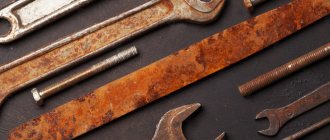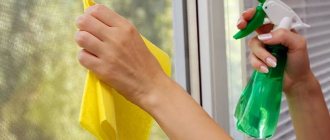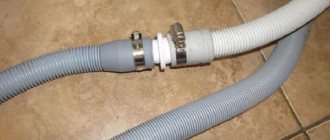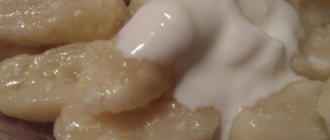Careful treatment of manicure tools is a conscious necessity on which the health of the master and clients depends. A frivolous attitude to this rule can provoke unpleasant consequences - from inflammation, fungi and mycoses to infection with very dangerous infections such as hepatitis C and HIV.
Do not underestimate the risks, because manicure accessories, along with particles of nails and skin, contain numerous microorganisms, bacteria and viruses. The slightest scratch or wound is enough for them to penetrate the body. Therefore, when it comes to disinfection and sterilization of instruments, it is better to be neat and even perfectionists.
Briefly about the main thing
You need to treat manicure accessories not only in the salon, but also at home. Even if these are personal instruments, they must be kept clean and sterile. This is especially important when performing trim manicures, in which microtrauma is inevitable. But in other cases you should not neglect caution.
When performing a home manicure, you need to disinfect the accessories used after each use. If they are used by one person, you can limit yourself to mechanical cleaning and disinfection. To do this, just wash the accessories with soapy water, rinse with clean water, dry and treat with an antiseptic. But for all accessories for non-individual use, sterilization is also necessary.
Which materials tolerate water and which do not?
Many types of nail files will become damaged if they get wet.
They are afraid of water and any other liquids:
- paper files;
- wooden;
- with fabric base;
- some files have a specific coating that wears off over time;
- many types of polishing files.
Not afraid of water and disinfectant liquids:
- glass or crystal files;
- ceramic;
- metal;
- plastic;
- most nail files are sprayed;
- foam-based (buffs and blocks);
- attachments for electric files and devices.
Stages of disinfection of manicure instruments
In beauty salons, the processing of manicure tools always includes 4 stages:
- Disinfection – immediately after use, accessories are placed in a bath with a disinfecting solution, an ultrasonic bath or a UV box. To eliminate the risk of infection, the technician takes the devices with tweezers or hands wearing protective gloves.
- Mechanical cleaning. Disinfected products are washed with ordinary soapy water, rinsed with water and dried.
- Sterilization. It is performed in an autoclave, dry-heat oven or glasperlene sterilizer. At this stage, even persistent microorganisms, spores of bacteria and viruses are destroyed.
- Storage. Carried out in craft bags and UV chambers until the next use of accessories, but no more than 30 days.
How does a leather file differ from a regular file?
A cuticle file is a “smart” tool. Ordinary nail files, whether metal, glass, or wood, have a special abrasive coating for filing the nail plate. A special tool for unedged manicure is not capable of destroying the nail or living skin tissue.
The surface of the cuticle file is intended only to remove dead skin particles.
No other manicure tool has such properties. Even if you have your nails done by a specialist who works with cutters, the risk of injury still remains. After all, the cutters also have cutting notches. And they don’t hurt your fingers only thanks to the skill and dexterity of the hardware manicure master.
Disinfection rules
Disinfecting manicure and pedicure instruments means cleaning their surface from germs, bacteria and infectious agents. For these purposes, disinfectants, antiseptics, ultrasonic baths, boiling and other means are used. It is important to understand that boiling is a method of disinfection, but not sterilization. Sterility is achieved at temperatures up to 180 °C.
The most convenient and reliable method of disinfecting manicure accessories is soaking them in a disinfectant solution of special chemicals. Among them, the following have proven themselves to be excellent:
- Disinfectant concentrate MultiDez Teflex is a highly effective product with excellent cleaning ability without foaming, powerful antimicrobial and sporicidal effects. After use, it leaves a barely noticeable film on the surface, which provides a residual antimicrobial effect. The product is suitable for use in ultrasonic cleaners. Does not cause corrosion of metals.
For disinfection, a 2% and 2.5% solution of this drug is used, and for sterilization - 4% and 5%. The holding time for instruments is 30 minutes for less concentrated solutions and 15 minutes for more saturated solutions.
- Kon from Rio Profi is an antiseptic that kills fungi, bacteria and viruses. Suitable for use in ultrasonic cleaners. Used in the form of 5%, 8% and 10% solution. The holding time for disinfected items is at least 20 minutes. Disinfects objects from bacteria, viruses, fungi, including candidiasis and tuberculosis.
- “Alaminol” from Irisk Professional is an antiseptic preparation for disinfection and cleaning of instruments before sterilization. Used in the form of 5%, 8% and 10% solution. To treat accessories in ultrasonic baths, an 8% solution is used. Effectively kills bacteria, fungi, viruses. Suitable for disinfecting objects made of metal, glass, plastic.
- "InstrumDez" from PharmCosmetic/Livsi is an antiseptic drug used for disinfection and sterilization of manicure and pedicure accessories. Has a detrimental effect on microorganisms. Does not cause corrosion of metal devices. Diluted in proportions 1:20. The duration of processing of disinfected items is at least half an hour. After treatment, products require a 3-minute rinse with running water.
- "Optimax Prof" from Irisk Professional is a universal disinfectant with a powerful effect against pathogenic microorganisms and infectious agents. Manicure accessories are disinfected by immersion in a 1%, 2% or 3% solution of this drug for an hour.
After disinfection using the soaking method, instruments should be removed from the disinfecting container with tweezers or gloved hands to prevent harmful effects of chemicals on the skin.
Answers on questions
Alcohol should not be used to disinfect instruments. Upon contact with biological fluids, it does not dissolve, but fixes them on the surface of instruments. When sterilizing alcohol-contained instruments, there is always a risk that human tissues will become “baked”, which means that the instruments cannot be considered sterile.
Upon contact with disinfectants on the surface of instruments, about 70% of all viral, infectious and fungal bacteria die. The remaining 30% are either resistant to the disinfectant or become spores. Spores are a shell that is produced by bacteria under unfavorable conditions. It is in relation to this 30% that sterilization with its temperature effect is effective.
Basics of sterilizing cosmetic instruments
With proper sterilization of manicure instruments, harmful microorganisms are completely destroyed, including fungal spores and persistent infections such as hepatitis C. The treated surface becomes perfectly clean, and the items become absolutely safe for use. As a result, the risk of infection through manicure and pedicure accessories is reduced to zero.
In a professional environment, special equipment is used for such processing - sterilizers. They are used to disinfect nippers, scissors, cutters, pushers, files and other reusable accessories.
Depending on the type of device used, the procedure lasts 40–60 minutes. Sterility is achieved through high temperature. To treat cosmetics that cannot be heated to 180°C, radiation and disinfectant solutions are used.
Dry heat cabinet
Dry heaters work on the principle of an oven and kill pathogenic microflora with dry hot air circulating in the space of the working chamber. Heat-resistant accessories are placed in a tray and sterilized for 60 minutes at 180 °C. This is a standard processing mode, but you can set other parameters on the control panel - set a timer from 5 to 90 minutes and select a temperature from 50 to 200 °C.
Depending on the model of equipment used, the tools are placed in the dry-heat chamber in craft bags or without them, simply laid out on a wire rack inside the cabinet. Upon completion of processing you need:
- carefully open the cover of the device;
- remove the tray;
- place it on a previously prepared surface;
- wait for the accessories to cool completely.
A dry-heat oven is considered the most effective equipment for destroying microorganisms, viruses and infectious agents. It does not cause corrosion to metal objects and can be used to disinfect any heat-resistant accessories.
Autoclave
Disinfection of cosmetic accessories in an autoclave occurs using hot steam under pressure. Pathogenic microflora is destroyed due to a temperature of 110–140 ° C and due to the rupture of the membranes by pressure. The treatment lasts only 20–30 minutes. Exposure to hot steam is suitable for silicone and glass accessories that are not prone to corrosion.
Glasperlene Ball Sterilizer
This equipment is used for quick disinfection of manicure and pedicure accessories immediately before procedures. Sterilization is carried out using the high-temperature treatment method. Metal parts of cosmetic accessories are immersed for 20–30 seconds in small balls preheated to 160–180 °C.
Under the influence of high temperature, pathogenic microorganisms are destroyed, and the instruments become safe for use. At the same time, they do not become dull, because... high temperature exposure is short-term.
Glasperlene sterilizers are widely used both in beauty salons and at home. They are suitable for disinfecting scissors, tweezers, nippers and other miniature instruments. Only their working part is immersed in the heated balls, and the handles remain outside and are not sterilized.
Quartz devices
Quartz treatment is successfully used to disinfect files and other manicure and pedicure instruments. A device for quartz treatment disinfects accessories in 15 minutes and is especially convenient for craftsmen working at home. The tools are placed in the box, and after closing the lid, the device starts working. You can open it 10–15 minutes after the completion of the treatment session.
Ultrasonic devices
Treatment with high-frequency ultrasonic waves allows you to clean tools from grease, dust and other contaminants. The action of ultrasonic devices is absolutely harmless, but at the same time provides effective cleaning and disinfection. Burs, cutters and other cosmetic accessories are placed in the reservoir for 5-30 minutes. For enhanced cleaning, detergent is added to the water.
Ultraviolet cameras
Such devices are used for the safe storage of cosmetic accessories that have been disinfected. Ultraviolet light kills germs and bacteria, ensuring hygiene standards are maintained.
This equipment is intended for complex use in combination with other sterilization devices. By providing protection against microscopic particles of dust, viruses and bacteria getting on the surface, UV cameras prolong the achieved sterility effect. If during normal storage in a craft bag sterility is maintained for 3 days, then under the conditions of an ultraviolet chamber the instruments remain sterile for up to 30 days.
The operating principle of the UV camera is based on the irradiating effect of a bactericidal lamp. It is absolutely safe for people and tools, including allowing you to store manicure and pedicure accessories made of metal, wood and plastic. Professional cosmetologists and manicurists value UV cameras for their mobility, compactness and ease of use.
Rules for processing nail files, cutters and buffs
It is known that each instrument has its own specific disinfection rules that you need to know in order to avoid various problems. Moreover, the material of each instrument may differ. Wooden files cannot be placed in solutions, otherwise they will simply swell. In salons, such files are thrown away immediately after the procedure, or they use Deskosept AF with a spray bottle. But at home, you can simply spray a disinfectant solution on the instrument. After this, it is recommended to store the nail file in a UV device or separately from the rest.
If we take into account buffs that have a suede base, then no solutions will help in this case, because suede can very strongly absorb bacteria. A sterilizer will also not help in this case. In salons, as a rule, such buffs are not used for this reason. At home, suede buffs are disinfected with antiseptics.
Methods of disinfection and sterilization of instruments
Depending on the conditions of use of manicure devices, their processing can be minimal, standard or professional. Minimal processing is only permissible at home, while professional processing provides an almost medical level of sterility.
Minimum program - for disinfection at home
This method allows you to save on the purchase of professional sterilizers. In terms of effectiveness, it is inferior to standard and professional treatment, but is considered acceptable for use at home. It is performed according to the following algorithm:
- Disinfection of manicure instruments - performed immediately after the manicure procedure to prevent particles of biomaterials from spreading in space. You need to pour water into a container or box for disinfection and add a special disinfectant, for example, Kon, InstrumDez or Rionol. Cosmetics are immersed in the prepared solution and left for 15–30 minutes.
The solution is made according to the instructions - the amount of the drug recommended by the manufacturer is added to the water using a measuring cup or a disposable syringe. When diluting the concentrate, you need to wear protective gloves and a medical mask to protect your skin and respiratory organs.
- Cleaning. The devices are washed individually using a brush and detergent under running water until all visible dirt is removed, and then wiped with disposable napkins or dried on a wire rack.
- Sterilization. Disinfected and cleaned manicure accessories are placed in sterilization bags, placed in the oven and kept in the oven for 15 minutes at 180°C. This value must not be exceeded so that the devices do not lose their strength.
- Storage. Treated accessories are stored in closed craft bags until further use. The storage duration can be up to 30 days.
Standard processing
This method is used in beauty salons that do not have an autoclave or dry-heat oven. Its peculiarity lies in the use of a glasperlene (ball) sterilizer and a change in the order of steps: the devices are first sent for storage in a UV chamber, and are sterilized only before direct use.
The algorithm for standard processing of cosmetic accessories looks like this:
- Disinfection and cleaning in an ultrasonic cleaner - 2 procedures at once. The sink bowl is filled with water and disinfectant so that after immersing manicure accessories in it, the MAX level is not exceeded. In this case, the accessories to be cleaned must be completely immersed in water. Small items are placed in a special basket and then in a bowl. After closing the lid, the sink is connected to the power supply, the cleaning time is set to 15 minutes, and disinfection treatment occurs.
Note: In the absence of an ultrasonic cleaner, accessories are disinfected in a disinfection box, followed by rinsing with a washing solution and a brush under running water.
- Washing, drying and checking. At the end of the cleaning session, items are removed from the ultrasonic cleaner, washed and dried. After drying, they are carefully inspected for dirt, chips or scratches.
- Storage in a UV chamber or airtight box until use.
- Sterilization. Before use, the accessories are removed from the UV chamber, and their metal working part is placed in a preheated glasperlene sterilizer. The high temperature treatment process lasts 20 seconds. This time is enough to remove microorganism spores, and the instrument does not have time to experience negative temperature effects.
Maximum program – 100% sterility
Disinfection and sterilization of manicure instruments using this method ensures almost surgical sterility and allows 100% compliance with sanitary and hygienic requirements. The main difference between this method and previous options is the use of a dry-heat oven. Otherwise the technologies are similar:
- Disinfection + pre-sterilization cleaning in an ultrasonic cleaner, as in the standard method.
- Washing, drying and inspection.
- Sterilization. Accessories are placed in craft bags, sealed and processed in a dry-heat oven for 60 minutes at 180 °C. The temperature regime is maintained automatically. There is no need to set a higher temperature so as not to damage the instruments. When the set time has elapsed, a beep will sound and the power will be turned off.
- Storage. Disinfected accessories are stored in closed craft bags until further use. It is advisable to store them in a UV chamber, but they can also be kept in sealed boxes. The maximum level of sterility in such conditions is maintained for up to 30 days.
How are nail files processed at home?
It would seem, why disinfect manicure tools at home if only one person uses them? This is because the salons have a lot of traffic and therefore it’s impossible without it. But this is a misconception, because even on homemade nail files, microbes accumulate over time.
Disinfection is carried out with antiseptics or special ready-made solutions. But there is an option to make the solution yourself:
- 100 g of alcohol and 10 g of boric acid salt are poured into a small container.
- Then the container must be covered with a lid.
- The solution must be stirred periodically until a cloudy liquid is obtained.
- After this, add 30 g of potassium permanganate.
- The solution should turn out pink with a purple tint.
- The files are placed in this solution and placed in a steam bath.
- It is necessary to hold the instruments for no more than fifteen minutes, and the temperature should not exceed 50°C.
There is another simple way to sterilize - the oven. Files are processed as follows:
- First, manicure tools should be disinfected.
- After this they need to be washed.
- Then all the files are thoroughly wiped with napkins.
- The next step is to lay out the tools on an open surface; it is advisable to use foil. Moreover, this must be done in such a way that they do not come into contact with each other.
- Sterilization takes place at a temperature of 180 to 200 degrees.
- After fifteen minutes the oven is turned off.
It should also be understood that this processing method is not suitable for all instruments. Instead of the oven, you can simply boil all the files for about fifteen or twenty minutes.
Typical mistakes in disinfecting instruments
Mistake #1 – neglecting to use gloves and disinfect hands and all surfaces. For a safe manicure, it is necessary to disinfect not only the tools used, but the workplace and hands. All surfaces that you come into contact with must be perfectly clean.
Therefore, it is important to work with gloves and thoroughly disinfect hands and all surfaces. Disinfectant sprays, liquid antiseptics, gels, hand sanitizers and surface disinfectants are excellent for these purposes. You should always disinfect your hands and surfaces, even if you are only doing a manicure for yourself.
Mistake No. 2 – use only alcohol or boiling to treat tools. Such disinfection is permissible only for instruments for individual use. If cosmetic accessories are used to work with other people, more thorough protection against bacteria and viruses is necessary. This can only be achieved by sterilization at high temperatures - up to 180 °C.
Mistake No. 3 – incorrect choice of equipment for sterilization. It is best to sterilize scissors, tweezers, pushers, cutters, cutters and other metal tools in a dry-heat oven to ensure that all harmful microorganisms and their spores are destroyed. The heating temperature should not exceed 180 °C, so as not to dull the tools. The same treatment applies to ceramic and corundum cutters.
Instead of dry heat, you can use a glasperlene ball sterilizer, but with its help only the working parts of the instruments are processed. Disinfection with hot steam (110–140 °C) and pressure in an autoclave is suitable for treating cosmetics made of silicone and glass.
For accessories that cannot withstand high-temperature treatment, chemical sterilization with powerful reagents is performed. Files and polishing buffs made of plastic materials are disinfected with a disinfectant and stored in a UV chamber.
Mistake #4 – improper storage of tools. To keep sterilized instruments clean, they should be stored in craft bags or airtight boxes. The shelf life of sterile supplies in them can be up to 3 days. Sterility can be maintained for up to 30 days by storing in a UV chamber.
Cuticle file – unedged manicure at home – DEF4ONKI
1. Use reusable plastic-based nail files that are not afraid of disinfection;
These are substances of increased hardness, used in a massive or crushed state for mechanical processing of other materials.
Abrasive materials vary in hardness, shape, grain size and abrasiveness. There are natural (flint, pumice, corundum, garnet, diamond, etc.) and artificial (electrocorundum, silicon carbide, borazon, elbor, synthetic diamond, etc.) abrasive materials.
Do you believe in the benefits of visiting cosmetologists?
Not really
In cosmetology and the nail industry, abrasives are used to file or exfoliate the upper layers of skin (dermabrasive) or nails. For example, modern plastic nail files are covered with them. And the grinding buffs are covered with abrasive and polishing materials (abrasive chips, denim, suede, etc.). Ordinary pumice for smoothing and removing calluses is also an abrasive.
Files for working with natural nails can be decorated with a variety of color designs.
Nail file | — 2020
Very strong and durable. However, they cannot be called gentle. They can literally tear your nail. Also, their use can lead to splitting of nails. Only hard nails can be filed with such files. Metal files come with notches and metal coating.
Expert opinion
Ksenia Diyanova, expert on beauty, purity, harmony
Ask me any questions, I will be happy to answer!
Straight files are designed to reduce the length and give shape to both natural and modeled nails. Matte manicure is considered more capricious than glossy, especially if it is done in light colors. How to clean matte nails: 6 easy ways Ask me all your questions, I will be happy to answer!











